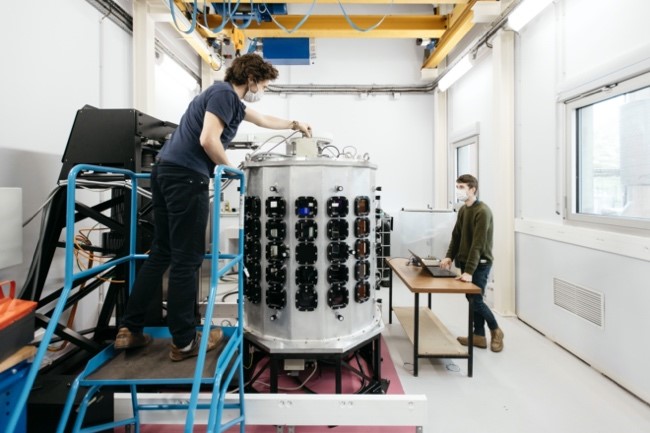Atmospheric and oceanic dynamics play a crucial role in meteorology and climatology. To understand these dynamics on a large scale, we can use sensors that move with the flow of air or water (on board balloons or buoys).
However, at smaller scales, turbulence can interfere with this description. Referred to as an "energy cascade" in fluid mechanics, turbulence evolves over time, with vortex-like structures that progressively decrease in size, down to fractions of a millimeter.
Only at this scale, known as the Kolmogorov scale (h), is most of the kinetic energy of the flow dissipated in the form of heat, due to fluid viscosity. However, for a so-called 'developed' turbulence, we have known since the middle of the 20th century that the dissipation of energy is independent of fluid viscosity. This "dissipative anomaly" was interpreted in 1949 by the physical chemist Lars Onsager as the existence of mathematical singularities, causing a non-viscous dissipation (of purely inertial origin) in addition to the classical (viscous) contribution.
These non-linear and irreversible phenomena are not taken into account in current climate models for atmospheric and oceanic circulations. However, according to specialists, they could produce significant effects.
In 2019, the mathematician Theodore D. Drivas successfully demonstrated the necessary relationship between the overall energy dissipation and the difference in the upstream and downstream dispersion of the constituent particle positions in the flow.
The Iramis researchers and their partners wanted to test this correspondence using a new experimental device that generates turbulence in a large volume (Giant Von Kármán). The GVK experiment consists of a tank of water (or a water-glycerol mixture) set in motion by two counter-rotating turbines, where the mechanical energy injected (and thus the turbulence intensity) can be adjusted over a wide range of Reynolds numbers. Its large dimensions (1 m3) and its versatility were selected in order to obtain optically observable dissipative structures.
The flow is seeded with polystyrene particles (tracers) that are illuminated by a high-frequency pulse laser (1,200 Hz) and imaged by a set of 4 cameras. This 4D Particle-Tracking Velocimetry technique is able to identify each of the 50,000 particles in the measurement volume (40×40×6 mm3) and to follow their 3D position over time. The researchers can thus reconstruct a dense field of particle trajectories (Lagrangian data) and deduce, by interpolation, the velocity field of the fluid with a good spatial resolution (Eulerian data).
Their measurements provide the first experimental confirmation of Drivas's theorem, with the observation of a clear correlation between areas of strong dispersion of trajectories, a sign of irreversibility, and highly dissipative areas pointing towards singularities, for a range of Reynolds numbers.
These results also allow to observe for the first time the construction of irreversibility. For this, the researchers must combine Lagrangian and Eulerian data to understand where and how irreversible events are formed and which particle trajectories are responsible. These events correspond to the interaction of vortices.
The superposition of highly irreversible Lagrangian and Eulerian zones and the interaction of vortices finally suggest a link between irreversibility and singularity. Indeed, high-resolution computational simulations show the construction of quasi-singularities at the site of the vortex interaction. The spontaneous appearance of irreversibility can therefore be interpreted as a symmetry rupture (i.e. phase transition) carried by a singularity.
This work is being continued now to explore the smallest scales below the characteristic Kolmogorov size, in search of the direct observation of singularities.
